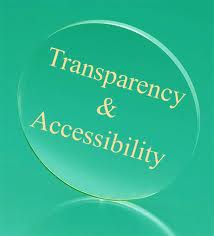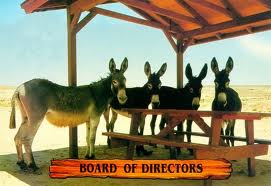 It has been a week since the Penn State child rape scandal broke, and I’ve been stewing in my emotions like most of you. There are so many aspects to this story, and it never dawned on me that any of these many storylines fit within the context of this non-profit blog until I read this quote from Moody’s in Forbes on Friday:
It has been a week since the Penn State child rape scandal broke, and I’ve been stewing in my emotions like most of you. There are so many aspects to this story, and it never dawned on me that any of these many storylines fit within the context of this non-profit blog until I read this quote from Moody’s in Forbes on Friday:
“Over the next several months, Moody’s will evaluate the potential scope of reputational and financial risk arising from these events. While the full impact of these increased risks will only unfold over a period of years, we will also assess the degree of near and medium term risks to determine whether to downgrade the current Aa1 rating. We will monitor possible emerging risks emanating from potential lawsuits/settlements, weaker student demand, declines in philanthropic support, changes in state relationship and significant management or governance changes.”
 OMG . . . this story is so big that it blinded me to the fact that Penn State is a non-profit organization belonging to the higher education portion of the sector. Once this realization hit me, I saw the story from a whole different perspective. Here are some of the thoughts that ran through my head:
OMG . . . this story is so big that it blinded me to the fact that Penn State is a non-profit organization belonging to the higher education portion of the sector. Once this realization hit me, I saw the story from a whole different perspective. Here are some of the thoughts that ran through my head:
- I wonder what it must be like for a board volunteer to sit on that board right now with all that liability hang over the university’s head?
 I wonder what the fundraising professionals must be doing to prepare for and mitigate the impact this scandal will likely have on its resource development program?
I wonder what the fundraising professionals must be doing to prepare for and mitigate the impact this scandal will likely have on its resource development program?- I wonder what university staff must be doing to minimize the impact this scandal will likely have on volunteer, booster and alumni program recruiting?
- How does a scandal like this affect the university’s strategic plan, and what are they doing to adjust their plans and factor in this new head wind?
- How much money will this scandal cost the university in lawsuits, increased insurance premiums, philanthropic losses and an adjusted bond rating?
After processing all of these questions, it dawned on me that ALL NON-PROFIT ORGANIZATIONS ARE PENN STATE and this is a “clarion call” for all non-profit agencies to take action immediate!
Take action? Huh? What are you talking about Erik?
 Regardless of how big or small your agency is, this scandal should strongly motivate you and your board to immediately take action on development of a crisis management plan. No one ever thinks that tragedy will strike. It is always something that happens to other non-profit organizations. And when it happens your world changes in a blink of an eye.
Regardless of how big or small your agency is, this scandal should strongly motivate you and your board to immediately take action on development of a crisis management plan. No one ever thinks that tragedy will strike. It is always something that happens to other non-profit organizations. And when it happens your world changes in a blink of an eye.
Penn State administration didn’t see this coming. One day they were on top of the non-profit world, and in a flash they are looking at a financial catastrophe (not to mention the human collateral damage done by the action and inaction of just a few men).
The non-profit organizations in Joplin, Missouri couldn’t have predicted a devastating tornado. One day their agency was there, and the next day they were gone.
The non-profit sector is naturally chaotic because most agencies are under-resourced. One person is typically asked to do multiple jobs. There never seems to be enough time to do those necessary capacity building things like preparing for future crisis. In a word, most non-profits are “reactive” and not “proactive,” which is typically our undoing when disaster strikes. So, take a moment to ask yourself these questions:
- Is my agency’s Director & Officer insurance up-to-date? When is the last time we looked at whether or not we have enough coverage?
- Who is our organization’s spokesperson in the event of a crisis?
- Do we have a “crisis team” that can be activated in the event of tragedy? Are there a diversity of people on that team (e.g. lawyer, psychologist, PR professional, board members, staff, etc)? Do they know they’re on that team? When is the last time this group went through an orientation looking at the “what if” types of questions?
- When is the last time staff reviewed your agency’s disaster contingency plans? Do you even have those plans in writing?
I encourage you to read this great blog post by Joanne Fritz at about.com titled “Top 5 Tips for Effective Nonprofit Crisis Planning“. It is a good to place to start as you use this national news story to motivate your board of directors to take action around developing a plan and putting systems in place to deal with whatever lurks ahead for you on the path of life.
Look at it this way . . . developing a crisis management plan could be a great cultivation or stewardship opportunity for certain fundraising prospects or existing donors to your organization.
If you look at this project as “one more thing that you don’t have time to do,” then it will be a burden and likely something that sinks to the bottom of your task list. If you look at it as an opportunity, then I suspect good things will happen for you and your agency.
Does your agency have a written plan? What is in that plan? How often do you review that plan? Is your plan posted online? If so, would you share that hyperlink with other readers of this blog so they can see a sample?
Please take a moment to answer one or more of these questions using the comment box below. It will only take a minute or two out of your very busy schedule and it could make a difference for another agency. If you don’t have time to comment, then click the forward button on your email and send this post to another non-profit professional who you care about and tell them that it isn’t too late to prepare for the apocalypse. After all, we can all all learn from each other.
Here is to your health!
Erik Anderson
Founder & President, The Healthy Non-Profit LLC
www.thehealthynonprofit.com
erik@thehealthynonprofit.com
http://twitter.com/#!/eanderson847
http://www.facebook.com/eanderson847|
http://www.linkedin.com/in/erikanderson847


















